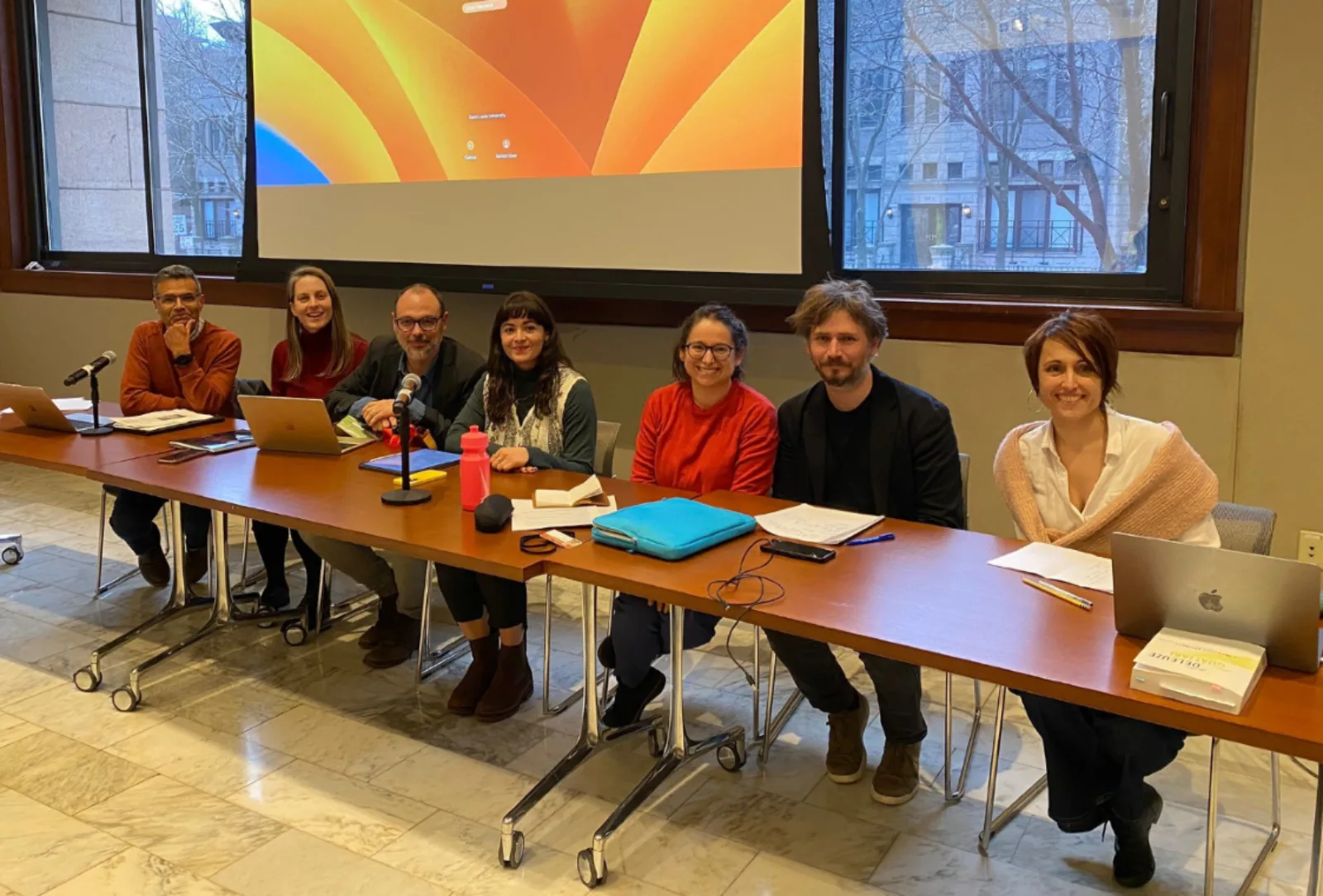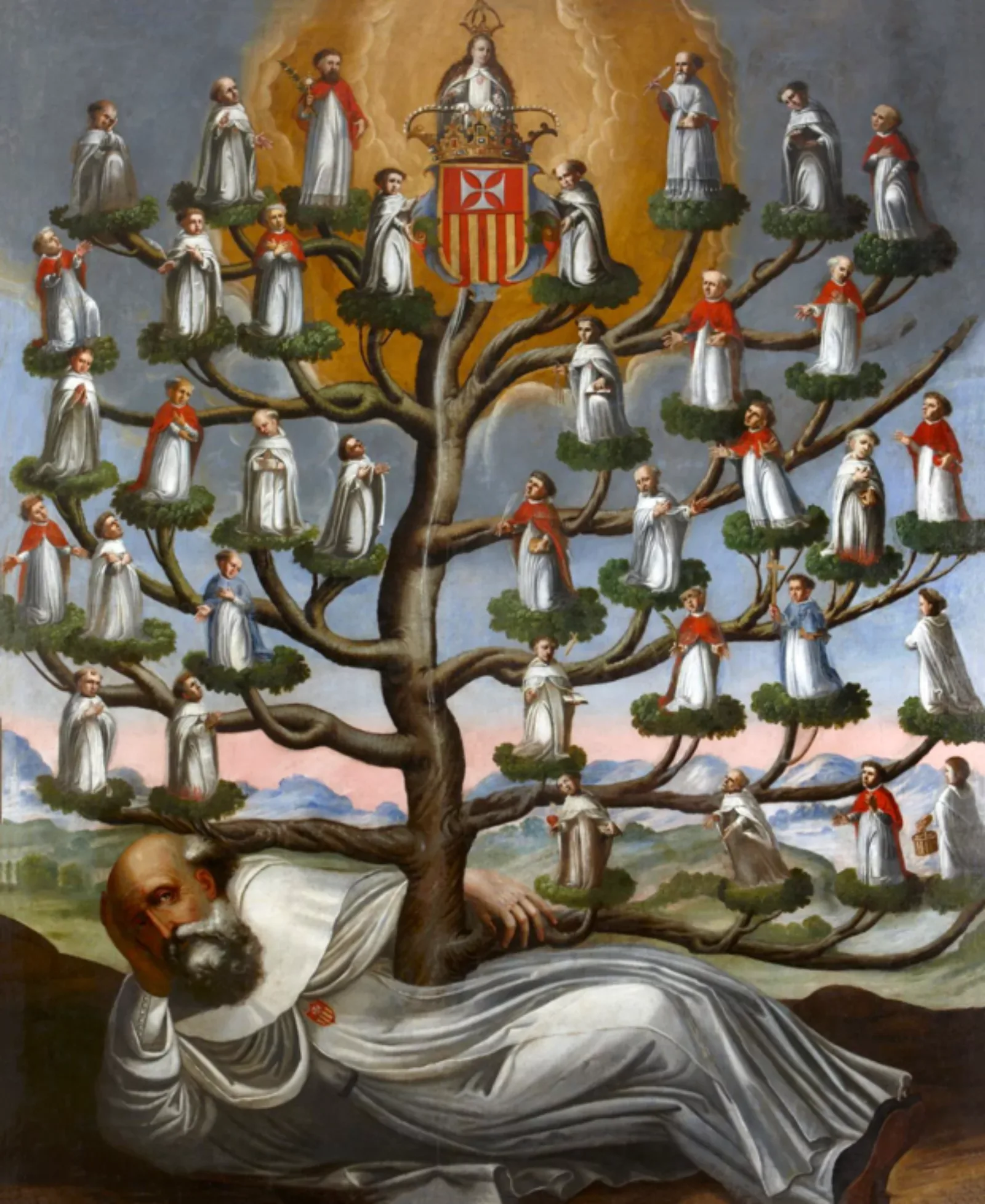During the 2023-2024 academic year, a group of Newberry fellows and scholars-in-residence from different fields and disciplines in early modern Iberian studies developed a common interest in a methodological approach called “the rhizome,” which embraces the vast array of complicated connections between ideas, objects, and actions in the past, just like the complex root systems of subterranean plants that originally carried that name. The so-called Newberry Rhizome Group explored this interest through informal conversations, research in the reading rooms, and at CRS programming throughout the year. This post is Part One of a series in which these scholars share the fruit of these explorations. To see Part Two, click here; for Part Three, click here.
This collection of contributions was designed and edited by Fabien Montcher (The Saint Louis University Center for Iberian Historical Studies - CIHS) and Maria Vittoria Spissu (Marie Skłodowska-Curie Global Fellow - University of Bologna/The Newberry Library) in the Spring and Summer of 2024.

Fabien Montcher, Department of History, Saint Louis University
Entanglements in 'Place(s) Whose Names I Do Not Care to Remember'
On March 13th, a group of Iberianists gathered at the Newberry Library thanks to the support of the Newberry Center for Renaissance Studies and the Saint Louis University Center for Iberian Historical Studies.
The group reflected on how the botanical metaphor of the rhizome helps conceive a history of empires that is not constrained by divides such as nature/culture, subjects/objects, and center/periphery.
The rhizome contributes to definitions of the so-called first Iberian globalization (15th-18th centuries) as an age of improvisation which was far from being constrained to the history of Spanish and Portuguese hegemonies.
In his short novel, entitled Rinconete y Cortadillo (1613), the author of Don Quijote, Miguel de Cervantes (1547-1616) immersed his readers in the underworld of the city of Seville. Cervantes tells the story of an improbable duo that found its way up to a Sevillian ‘academy’ of thieves. Brought together by chance, one of the two protagonists declares that “my patria, I had no idea, and I do not even know where I am going.”
Like a rhizome, Cervantes’ story does not begin at a specific point in time and place. It follows a narrative line from which any other might emerge at any moment.
Riconete/Cortadillo’s story comes into being thanks to the promise of communal life. Rinconete as the card sharp merges his skills with Cortadillo, the pickpocket. Together, they form a hybrid body. None of who they/we think they are is written in stone. Nothing is absolute, except their desire to explore the new bodily site of their unlawful cooperation.
What I just described, is an example of what the rhizome is or was. This description echoes Deleuze and Guattari’s work, A Thousand Plateaus (1980) on the definition of the rhizome as “an anti-genealogy.”
“In contrast to centered (even polycentric) systems with hierarchical modes of communication […], the rhizome is an acentered, nonhierarchical, nonsignifying system without a General and without an organizing memory […], defined solely by a circulation of states. What is at question in the rhizome is a relation to sexuality-but also to the animal, the vegetal, the world, politics, the book, things natural and artificial-that is totally different from the arborescent relation: all manner of “becomings.”
In this blog-post series, the scholars that gathered at the Newberry in March 2024 reflect on what happens when they resist thinking through arborescent connections about beings, things, words, and representations conceived as tree-like. Does the rhizome become a one-way concept limited to the study of contingent worlds and unlawful environments?
What follows is the start of a broader conversation that we hope to launch across different fields of enquiry. We look forward to its developments!
Maria Vittoria Spissu, Department of the Arts, University of Bologna
Magnetic Iberian Interactions
Why the heuristic metaphor of the rhizome can be fruitful in Iberian studies and studies regarding empires and networks, especially when considering their discontinuous and non-synchronic patterns?
Let us start with the Southern Italian and Mediterranean kingdoms ruled by the Crown of Aragon and then by Emperor Charles V (1500-1558). Art history dedicated to the Mediterranean Renaissance has often used the maritime traffic among Spanish and Italian port cities as a paradigm to explain the spread of styles and models.
So, Western Mediterranean routes have become almost mythical, partly correcting some distortions embedded in the dichotomy between center and periphery, where the center can mean Rome and Florence, and the periphery the Italian South and its islands. In this system, the Iberian Americas become the periphery of the periphery. Consequently, to be acknowledged, the alleged periphery is always in need of providing a noble and brave alternative, like the horse’s move on the chessboard! This methodology is based on the concept of influence by a prominent artist or artistic center on a supposedly minor artist or secondary center.
Thomas DaCosta Kaufmann and Sanjay Subrahmanyam have opened new perspectives by considering the global circulations and geographies of art and connected histories. So, if someone doesn’t take for granted alleged centers, this doesn’t mean that she or he is focusing on backward cultural zones/areas. These zones/areas are simply oriented toward an elsewhere, which often is not Western Europe. These zones/areas often form part of another system of magnets (here is another metaphor that might be useful for further research!).
In this succession of metaphors, scholars have conceived the Iberian Monarchy as a composite system, a polycentric entity, a constellation of kingdoms and viceroyalties, saints and missionaries, cults and images.
Why, however, do we need the rhizome? All these approaches consider people who travel (merchants, painters), objects in motion (works, prints), or rely on bold and hierarchical dependencies, resistance relationships, measurable and manifest connections, and synchrony and effects.
How can we get a more balanced insight into this monarchy and explain connections that may be fragile or significant affinities that are not based on evident contacts? Or analyze together disconnected works, people, and places?
Moving to the Iberian Americas, we could find similar issues and approaches, for example, with the circulation of models, such as the prints by Hieronymus Wierix or from Maarten de Vos and Rubens. Scholars often use many terms to explain this process: copying, reception, transfer, transformation, or distributed agency. These terms imply the normative power of the model or try to defend the authorship of local artists (and collective creativity).
But what happens when a non-canonical group of objects or agents appear related but what circulated is not a unique, eloquent, and shared model? What happens when we want to venture further into a topic characterized by disturbing and jumbled dynamics or disruptive and elusive entanglements?
Thanks to the rhizome, which develops horizontally, we can embrace several sets of apparently heterogeneous events and works to explore the construction of narratives and ideologies. Thus, we are then able to explain not only the circulation of the same painter or print, the same book or idea, but to reflect on the participation of several places, even independently, in an enlarged geo-cultural climate of artistic creation that can be connected or highly fragmented.
In the following sections, we gathered a rich array of examples and cases where the rhizome helps to understand the complexity of political, religious, material, and literary phenomena, while considering the Iberian worlds as our prime focus of analysis.
